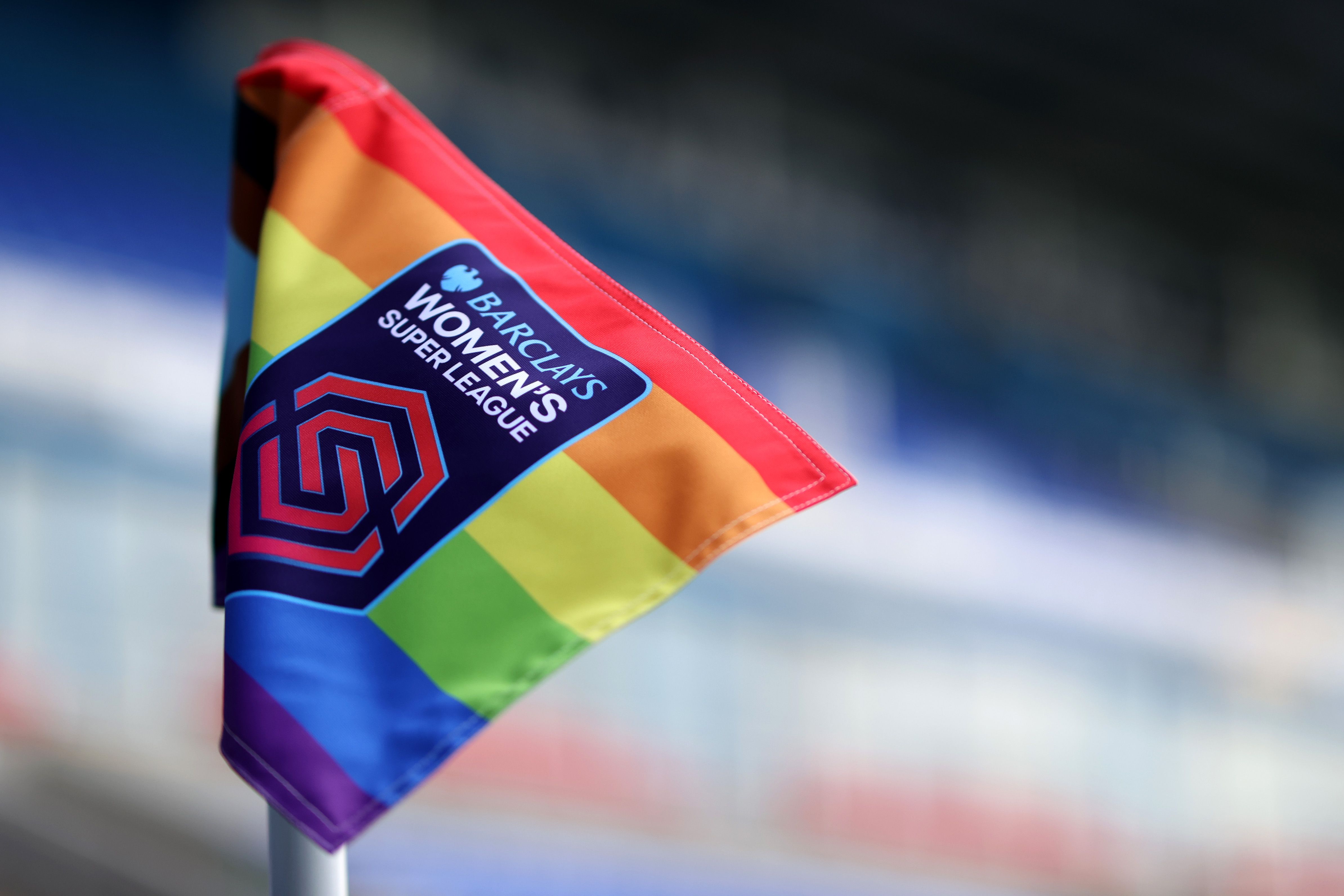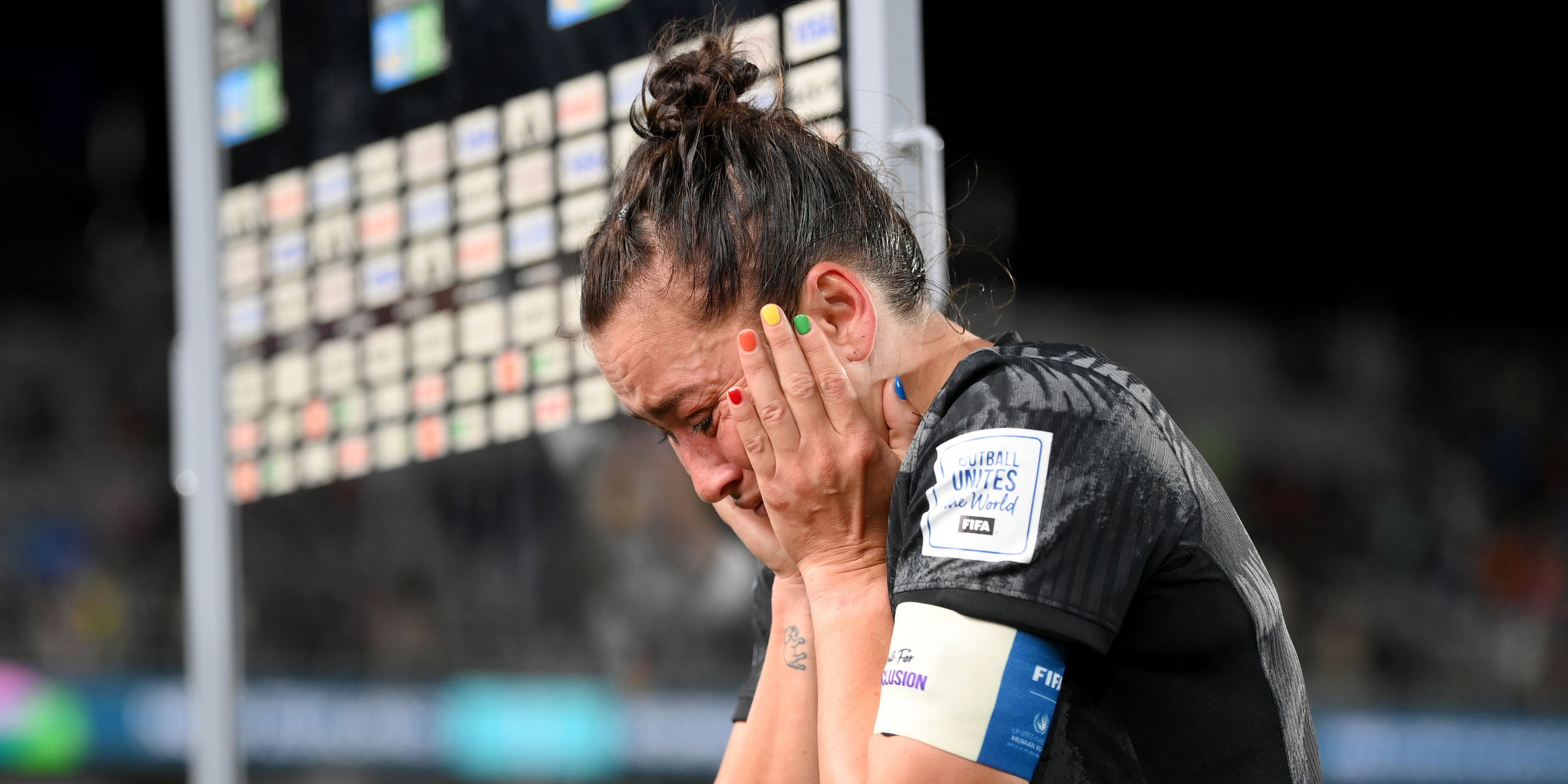A large proportion of players at the Women's World Cup are part of the LGBTQ+ community, but despite this, FIFA have not allowed captains to wear the One Love armband.The armband in question features the number one inside a heart, along with a rainbow — a globally recognised symbol of LGBTQ+ rights.The decision to ban the One Love armband at this year's tournament came after male footballers were also dissuaded from wearing it at their World Cup in Qatar last winter.To appease the players at the Women's World Cup, FIFA has brought out eight sanctioned armbands that the captains can choose to wear to highlight other social injustices.These are: Unite for Education for All, Unite for Ending Violence Against Women, Football is Joy, Peace, Love, Hope and Passion, Unite for Inclusion, Unite for Indigenous Peoples, Unite for Peace and Unite for Zero.While many athletes competing in Australia and New Zealand this summer have decided to wear these pre-sanctioned armbands, a few have decided to show their support for the LGBTQ+ community in other ways, and some have been extremely creative.GiveMeSport has looked into some of the most innovative ways players are showing their support for the LGBTQ+ community at the Women’s World Cup, whether it's nail art or hair dye.
Thembi Kgatlana’s rainbow undercut
South African striker Thembi Kgatlana showed support for the LGBTQ+ community at the Women’s World Cup this summer by spraying a rainbow design into her hair.
Ahead of Banyana Banyana’s 2-1 defeat at the hands of Sweden, Kgatlana rocked a technicolour design in her undercut while standing for the South African national anthem.
Following the move, one fan wrote via Twitter: “I knew this FIFA armband BS wasn’t going to fly with these players, and I’m loving all the different ways they’re choosing to show pride!!!”
Another said that the 27-year-old was “in the running for best soccer hair in the World Cup!”
Speaking about the style, the Racing Louisville star said: “My personality is very big for me, and my hair has become a part of my personality.
“And I did this rainbow because I want to represent all the people that are part of the LGBTQ+ and cannot talk while in countries where they’re oppressed.”
Ali Riley’s LGBTQ+ manicure
New Zealand kicked off the Women’s World Cup in style earlier this month with a 1-0 victory over former tournament champions Norway.
Alongside the historic moment – the Football Ferns had never won a World Cup match before – Ali Riley made headlines with her fun rainbow manicure.
On one hand, the Angel City FC baller had painted her nails red, orange, yellow, green and blue. On the other, the colours of the transgender flag featured – light blue, light pink, and white.
Breaking the internet, fans came out in their droves to praise Riley, with one writing: “One more reason out of all of the many reasons to adore @RileyThree.”
A second wrote: “The rainbow and trans (sic) colours!! @RileyThree is a star.
Regarding the design choice, Riley’s teammate CJ Bott said: “She’s such an advocate and she’s definitely someone who uses her platform in such a positive way. We are all so proud of her and the way she represents the LGBTQ+ community.
“Good on her. We’re all backing her, and we all back the community as well.”
Sarina Bolden’s Instagram bio
While Sarina Bolden may not be able to wear the OneLove armband in support of the LGBTQ+ community, the Philippines star is supporting the community via social media instead.
Of course, the 27-year-old helped her nation take home a historic 1-0 win over New Zealand in Group A in the second round of group stage matches.
Bolden’s Instagram account has 15,000 followers and her bio reads: “i just wanna have fun n b gay.”
She is one of the 95 out participants playing at the Women’s World Cup this year. According to Outsports, that’s more than double compared to the openly LGBTQ+ coaches and players at the tournament in 2019.
Stadium light shows
It isn’t just the players on and off the field who are appearing to support the LGBTQ+ community at the Women’s World Cup this year.
Ahead of the England Lionesses’ opening game against Haiti at Brisbane Football Stadium, a rainbow light show took place at half-time.
The 52,500-capacity venue was bathed in kaleidoscopic colours including purple, blue, red and yellow, while fans were encouraged to light up the stadium using their mobile phone torches.
While it hasn’t been definitely confirmed whether this was a Pride-based celebration, as coloured lights were installed in the venue circa 2021, social media has been quick to claim it as one.
One fan wrote: “FIFA may have banned One Love but they can't ban gay lights.”
Another said: “'Shade never made anybody less gay, FIFA.”
How many players at the Women's World Cup are part of the LGBTQ+ community?
The 95 openly LBGTQ+ participants at the Women's World Cup make up roughly 13 percent of the 736 total players.
Openly LGBTQ+ players include US star Megan Rapinoe, Ireland captain Katie McCabe, Australian icon Sam Kerr and Swedish defender Magdalena Eriksson.
Canadian midfielder Quinn is also the first-ever openly transgender, non-binary athlete to compete at the Women’s World Cup.

